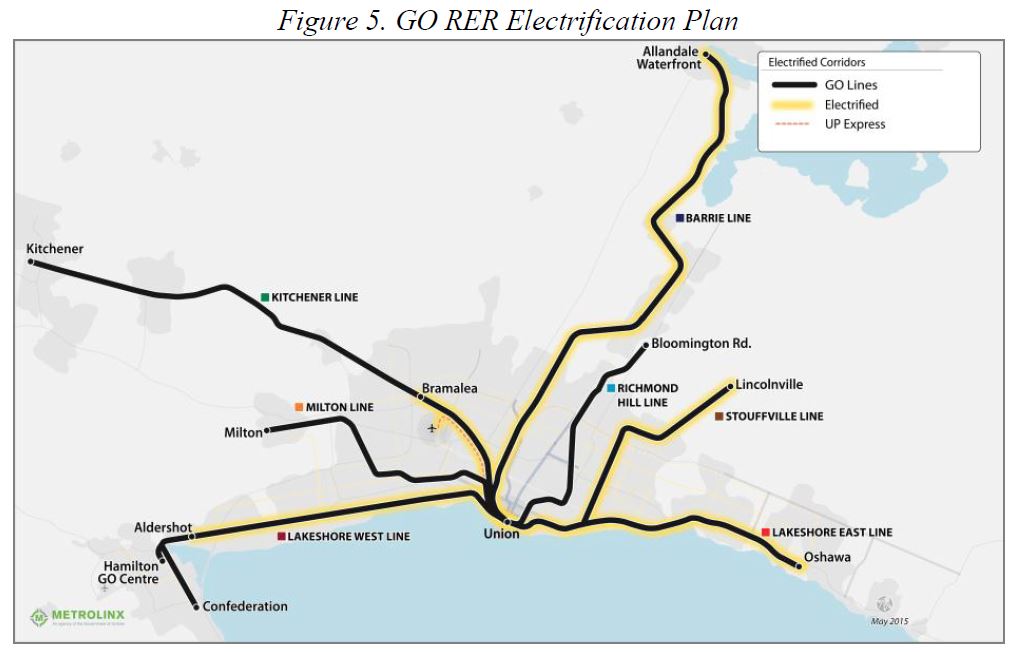Basically GO RER will be the same thing as Smarttrack, so MOST GO lines will have the same technology as Smarttrack.
This will be especially so if complete fare integration is approved for all GO stations in Toronto proper
https://www.insidetoronto.com/news-...single-fare-for-all-transit-trips-in-toronto/
However, why not some lines?
Milton GO line is owned by CP rail, not Metrolinx. Thus they dictate what can be done with it. Its a major rail line for CP rail, and they don't want any more trains and stations on the line, let alone electric trains.
The Richmond Hill line has lower ridership than most, and plus it exists in an area prone to flooding. This is an issue metrolinx needs to fix first before offering better service on it.
The Kitchener and Stouffville Lines (where "Smarttrack" is operating) are owned by Metrolinx, and are in areas of densification, where more stations would greatly help out with transit in Toronto.
Some other lines, like the Barrie Line, parallel existing transit (Line 1 subway) so adding stations makes less sense.
However, Metrolinx IS adding more stations on almost all lines, and electrifying most, so you will see "Smarttrack" like service on most lines!
Here is what is planning to get electric service
Here is what is planning to get "subway-like" frequent service, aka "like Smarttrack" (figure 4)
and here are the new stations being proposed for GO RER, not just the "Smarttrack" lines









